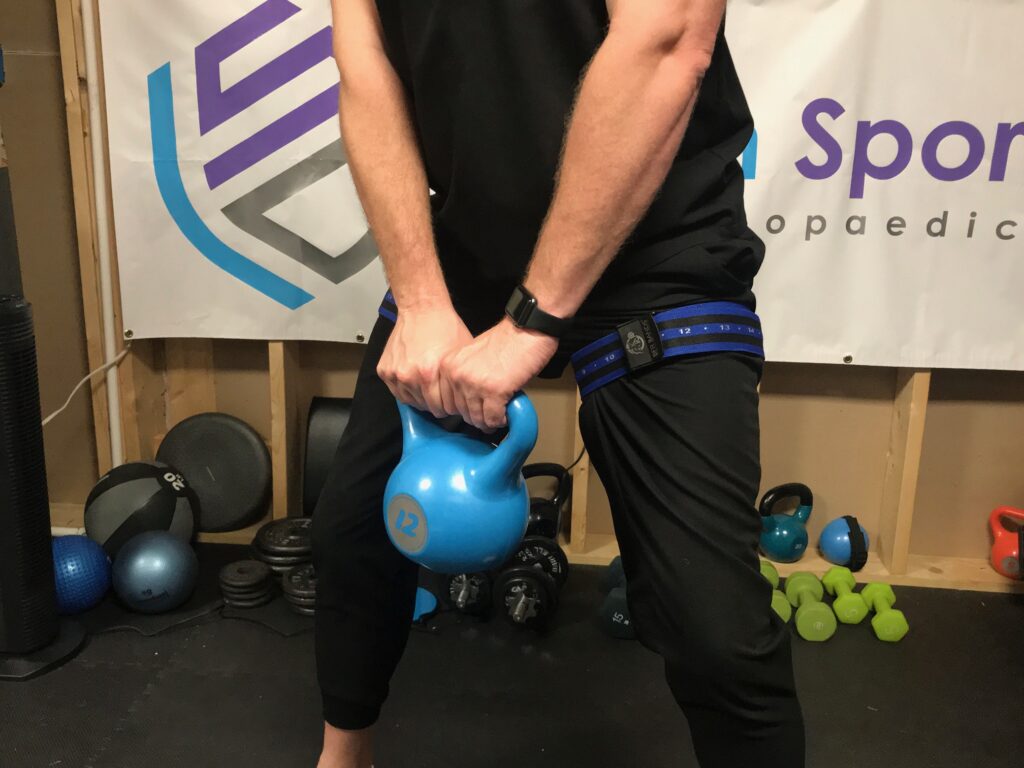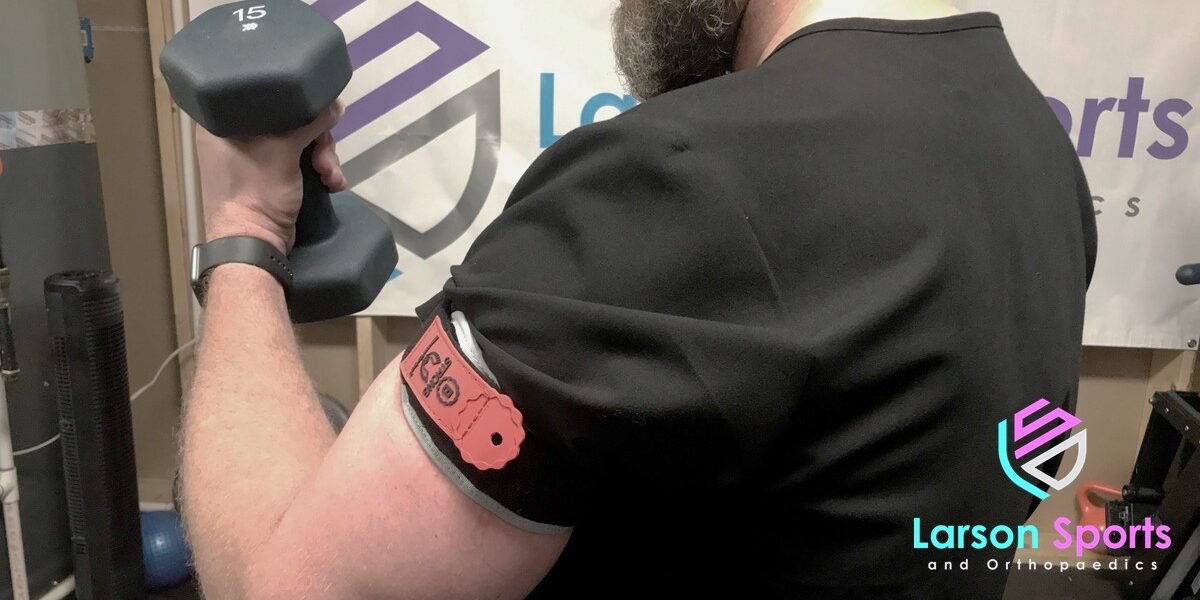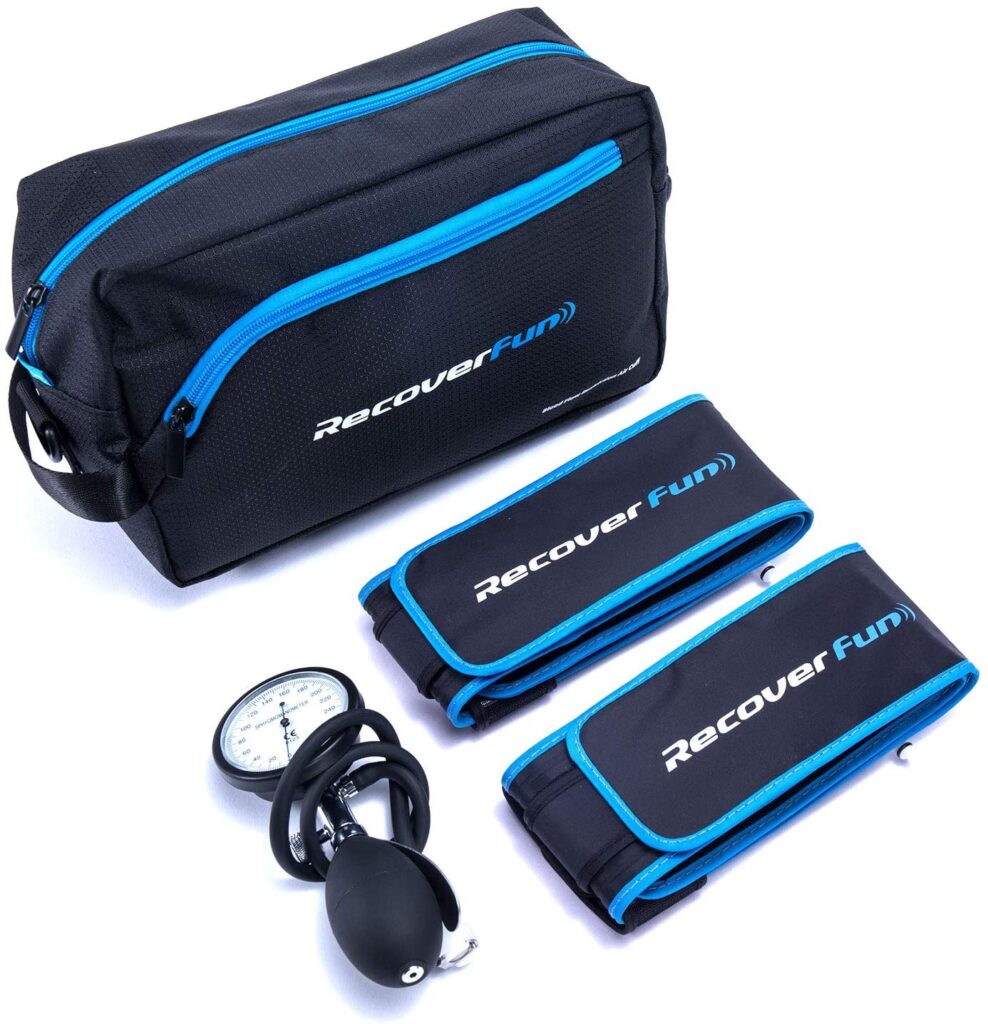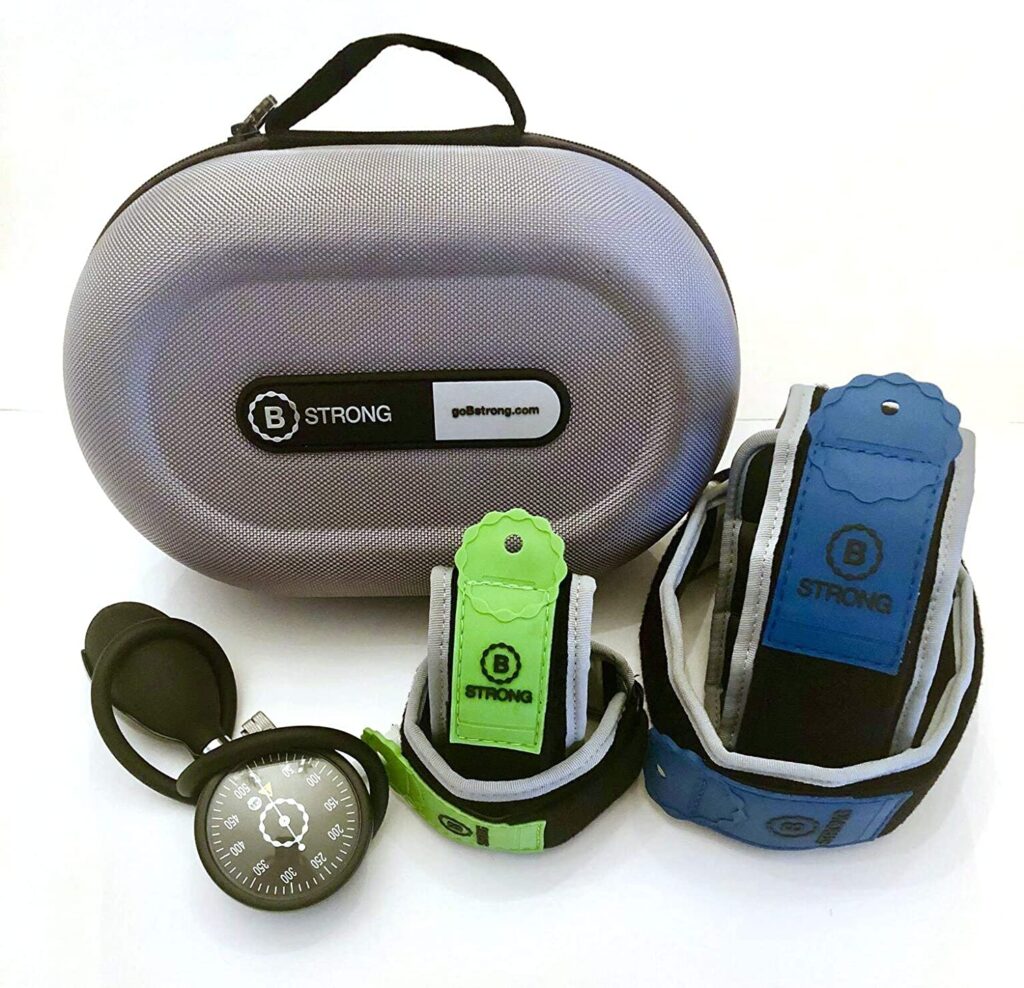One of the most popular new training modalities at our physical therapy office is also one of the fastest-growing strength training methods: Blood Flow Restriction Training. Sometimes known as BFR or Occlusion Training, it employs light tourniquets while exercising at low resistance to produce great gains in strength and muscle bulk. But people have a lot of questions about it. So I’ve compiled your most frequently asked questions into this BFR FAQ!

Dr. James Larson is an orthopedic surgeon specializing in sports medicine and arthroscopic surgery. He also holds a CF-L1 certificate and is a Certified BFR Specialist. He supports weight training and high-intensity exercise throughout the lifespan. He started LSO to keep more people moving better, longer.
What is the difference between BFR training and occlusion training?
Answer: There is no difference between these terms. Whether you call it occlusion training, blood flow restriction, or BFR training, it’s all the same. They are just different terms for the use of low-pressure tourniquets to slow the return of blood from your muscles while exercising.
Why do people use blood flow restriction training?
Answer: Blood flow restriction training is a way to gain lots of muscle while lifting light weights. The BFR bands block the return of venous blood from working muscles. This results in a buildup of metabolic byproducts; up to the same levels that would normally come after a heavy workout. That high concentration of metabolites triggers muscle growth similar to a heavy routine of weight lifting close to your maximum levels.
BFR is used after orthopedic surgery to prevent muscle atrophy while still protecting healing tissues. It is used by elderly people to regain lost muscle without hurting their joints. Body Builders use BFR to pack on muscle without damaging tendons and ligaments. Pro athletes use BFR to increase their endurance and strength beyond normal training capacity. And many recreational athletes use it to make better gains in less time.
Where do I place the BFR bands?
Answer: BFR occlusion bands should be placed at the top of the arms and thighs. On the arms, put them just above your biceps and below the shoulder. They should be resting near the armpit on the inside. On the legs, put them up near the groin, above the thickest part of the thigh. Putting them at this level will provide the same benefit to all the muscles in the working limb. But putting them around the elbow or knee can result in nerve damage.
Which BFR bands should I use?
This really depends on your budget and goals. Are you a trainer or therapist who is going to use them with clients? Are you just starting out and looking to keep it low-cost? Or are you looking to upgrade from basic bands and take your training to the next level? Well, there are bands for all these needs and budgets and the I’ve prepared a comparison of my top three recommendations in this article:
COMPLETE GUIDE TO BLOOD FLOW RESTRICTION TRAINING AND BFR BANDS
How tight should I make the BFR bands?
Answer: The bands should not actually be terribly tight. We usually recommend that people judge tightness on a ten-point scale. BFR is effective when you’ve tightened the bands to a subjective sense of tightness between 4 and 7 out of 10. Under 4 isn’t tight enough to be effective. And anything over a 7 puts you at risk of injury without improving your results.
This is a subjective sense, based entirely on your own feeling. You want them to feel pretty tight but not painful. For those who have a high pain threshold, you want them tight enough to make your hands or feet darker red, and the veins in your hands, feet, arms, or legs should be more easily visible. But if the hands or feet are turning white and the veins collapse or disappear, you’ve gone too far.
How many sets and repetitions should I be doing?
Answer: A typical 20-minute BFR session includes 3 sets of 20-30 reps, and a full session should consist of three to five different exercises. You should rest 20-30 seconds between sets. And you should rest one or two minutes between each exercise.
Your first set for each exercise should consist of 30 reps. During the second set, fatigue should limit you to between 20 and 30 reps. And on the third set of an exercise, you should struggle to get to 20 reps. If it’s easy to do 30 reps every set, the bands aren’t tight enough. You typically don’t want to add extra weight – stick with 25-30% of your normal maximum. And if you can’t do thirty reps on your first set, you are using a weight that’s too heavy.
How often should I do BFR training?
Answer: For most people, 2-3 days per week is sufficient. This will help keep your muscle growth high while giving you plenty of time for cardio, sports-specific training, or heavier training sessions if desired. Sessions of occlusion training are shorter than an average gym session, usually lasting about 20 minutes. Because they produce muscle growth without muscle damage, they can be done on active recovery days. And you can do multiple 20-minute sessions in a day, like one upper body and one lower.

Do I keep the BFR bands tight the whole time?
Answer: In most cases, you should release your BRF bands after completing all three sets of an exercise. Leave them down for 1-2 minutes, and then tighten them again for the next exercise. It’s okay to adjust them if you get a big “pump” after a set and the bands become too tight. But try not to release them completely to do so. With most bands, you want to release the pressure only after you’ve completed all three sets of an exercise. Some bands, like B Strong, can be left inflated for the entire 20-minute session.
I can do 3 sets of 30 reps easily with the bands on. What should I do?
Answer: The first step is usually to tighten the bands. If using strap-and-buckle bands, tighten them by half of a marker. If using inflatable BFR bands, increase the pressure by 25 mmHg. But don’t make them so tight that you get danger signs. And don’t tighten them above a subjective sense of 7/10. If it’s still too easy, then use more resistance. Bump the weight by a couple of pounds. Also, it’s important to keep the rest between sets at 20-30 seconds. That way you maintain high levels of metabolic byproducts that help induce fatigue and muscle growth.
Blood flow restriction… that sounds scary. Is it safe?
Answer: Yes! There are many research studies showing that blood flow occlusion training is safe and effective even if you have other medical problems. One study even concludes that blood flow restriction training is safer than traditional weight training because it is performed with lighter loads.
However, there are some medical conditions that may make it dangerous to use BFR training. This list of conditions includes pregnancy, sickle cell, untreated blood clots, peripheral vascular disease, and venous insufficiency. As always though, check with your doctor to be sure of any precautions you should take.
This does not constitute specific medical advice and does not indicate a physician-patient relationship between Dr. Larson and readers of this website. Please consult your own physician regarding any of these recommendations before starting them.
References
Blood Flow Restriction Training: Implementation into Clinical Practice
This post contains affiliate links. If you want to purchase any of these items, please use the link in the article. Amazon doesn’t let us post the prices, so you’ve got to click the link to check them, sorry. We do get a small percentage of your purchase without costing you any more. The products may be available for purchase elsewhere but we appreciate it when you use our links, it helps to keep the servers running. Thanks for your support!




